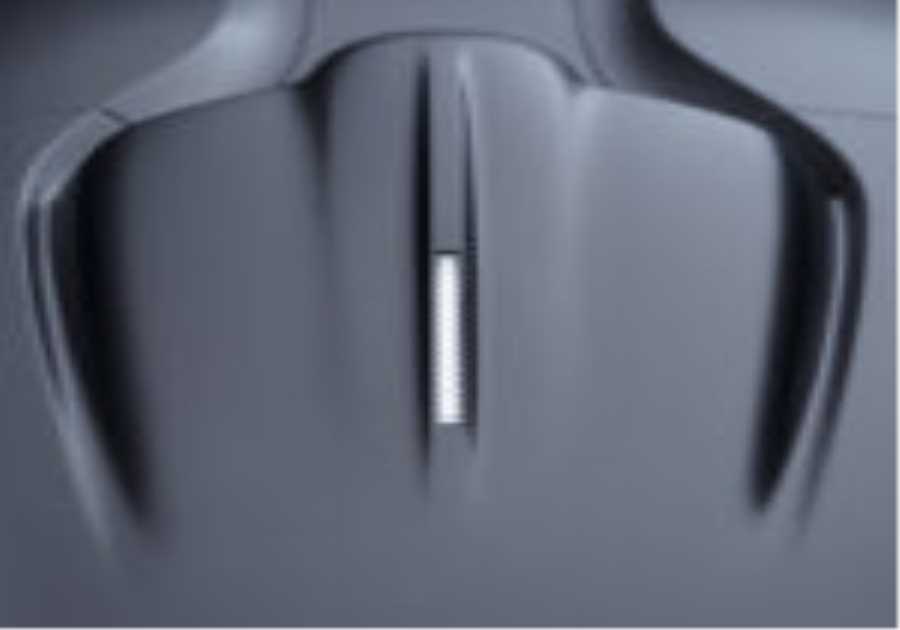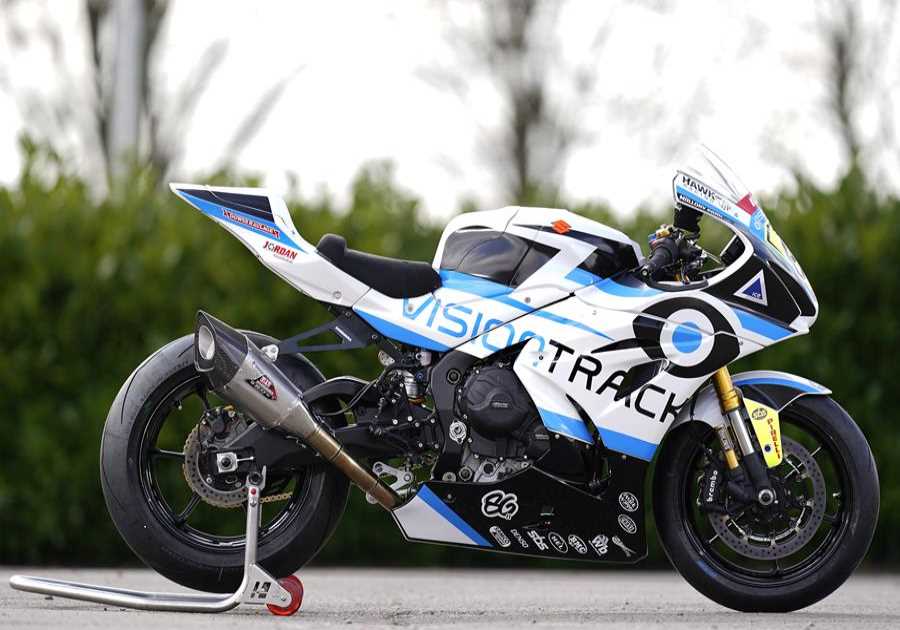
Because despite the great encouragement Ferrari brings from recovering from a terrible 2020 season in which it finished a low sixth overall, third place is still not its ultimate goal.
This season, Ferrari team boss Mattia Binotto has made this point clear again and again: “Progress” is far more important than the final result in the 2021 constructors’ championship.
But judging progress can sometimes be a subjective thing, making it difficult for those outside of Ferrari’s upper management to understand where the team is on the way back to the top.
Sure, there are some obvious front-of-stage performances, like Charles Leclerc’s pole positions in Monaco and Baku this year, that show it’s on the right track.
But Binotto prefers to dig into more detailed numbers to gauge where Ferrari is at right now. And it is these numbers that have taken him quite a surprise of where things are going.
Progress is visible to everyone at certain points. With 163 points on its name after the first ten races this year and thus joint third in the overall standings with McLaren, Ferrari has already slightly overshadowed the 131 points it scored in 2020.
But what is even more impressive is the fact that it only scored 80 points after the first 10 rounds last year.
Binotto explains: “For the same number of races it is more than double. If we look at the entire grid, we have won the most. “
There are other key indicators that show similar progress.
“If we look at the lap time and the pure car performance, we take qualifying, because that’s where we are all at top performance, if we take the average for the entire season, [last year] we were 1.4 seconds away from pole, ”he says. “Today we are 0.7 seconds away.
“A gap of 0.7 seconds is still a distance and should not be neglected, so we are aware of that. Still, I think we’ve cut the gap to the best in half, and that’s encouraging because it shows we’re going in the right direction. “
Carlos Sainz Jr., Ferrari SF21, makes a pit stop
Photo by: Glenn Dunbar / Motorsport Images
Another key area that Binotto sees huge gains is in the pit stops, where he believes the data suggest Ferrari is among the very best again.
“I always think that a good pit stop is less than three seconds, which we call green, when the driver leaves the pit,” he explains.
“Three seconds might seem like a large number, but I always say that in strategy it is important to be constant, not just fast, but constant too.
“What happens in a race is if you have a problem sometimes and your stop can take five or six seconds, that type of situation can be very difficult.
“So if we look at the three-second mark and how often we were below three seconds in 2021, it’s 84% so far. Last year it was 48%.
“Here we show again that we as a team and the mechanics of the pit crew have certainly improved our pit stop time and our pit stop quality when it comes to pit stops.
“If you look at the stops of less than three seconds, again in percent, we were P8 in the classification last year. So there were seven teams that were better than us.
“Today we are P2, so there is only one team that has done better than us in a percentage of less than three seconds.
“These are the numbers that show that in 2021 as a team and with the car there will certainly be improvements compared to 2020. And the direction is encouraging. “
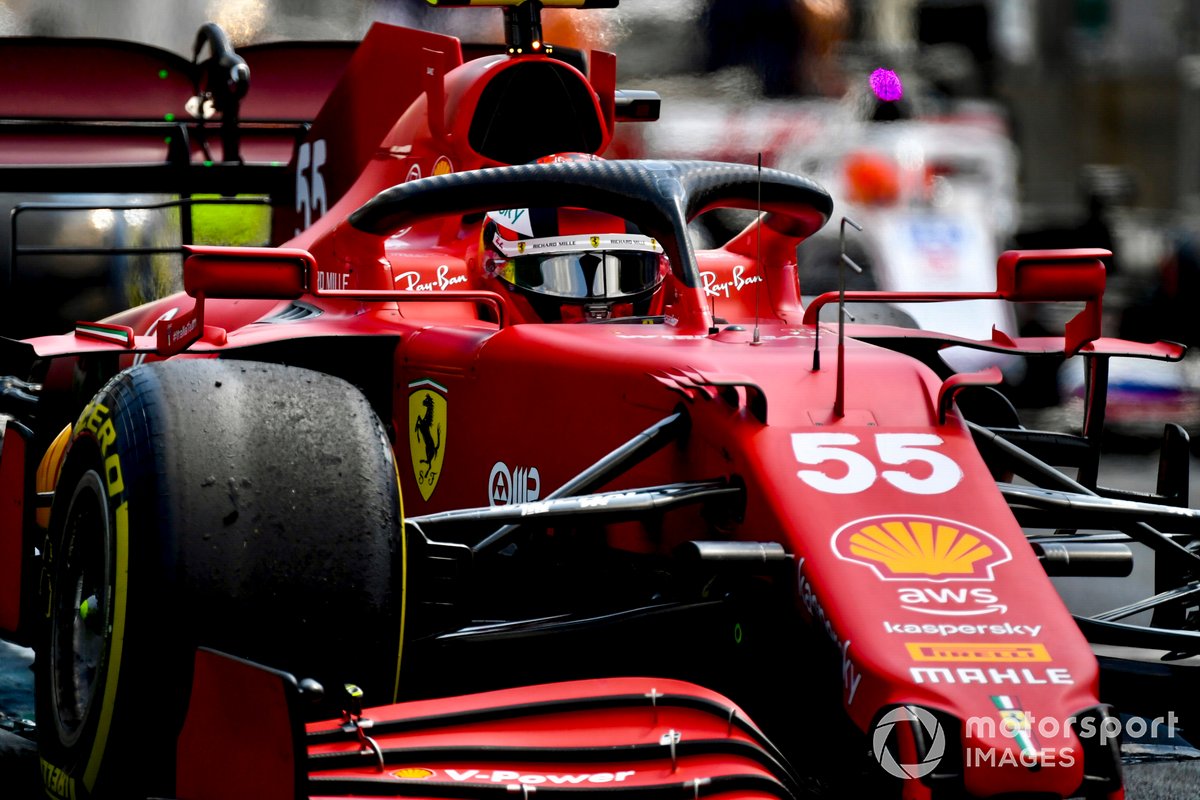
Carlos Sainz Jr., Ferrari SF21
Photo by: Motorsport Images
Needed even more
Halving the gap to Mercedes and Red Bull is certainly a good step in the right direction, and Binotto believes that 60% of this can be attributed to an improvement in the engine and 40% to the chassis.
But as good as halving the gap up front is, reality also shows that there is still just as big a leap to be able to beat Mercedes and Red Bull purely in terms of speed.
Ferrari’s hopes of achieving this will be bolstered by a “significant” engine upgrade in the second half of the campaign, but advancement on the vehicle front will come from incremental improvements rather than a silver bullet.
Binotto adds: “There are still gaps in the best, as I said, 0.7s in qualification. I think 0.7s doesn’t just come from a single area. It is a sum of different areas, so certainly a sum of aerodynamics, drive unit and overall systems on the car.
“I don’t think we’re missing in one area either. But I think if just one area is missing it would be even worse because that means you have to recover a lot in a single area, which can be more difficult. So it is a sum of different areas. “
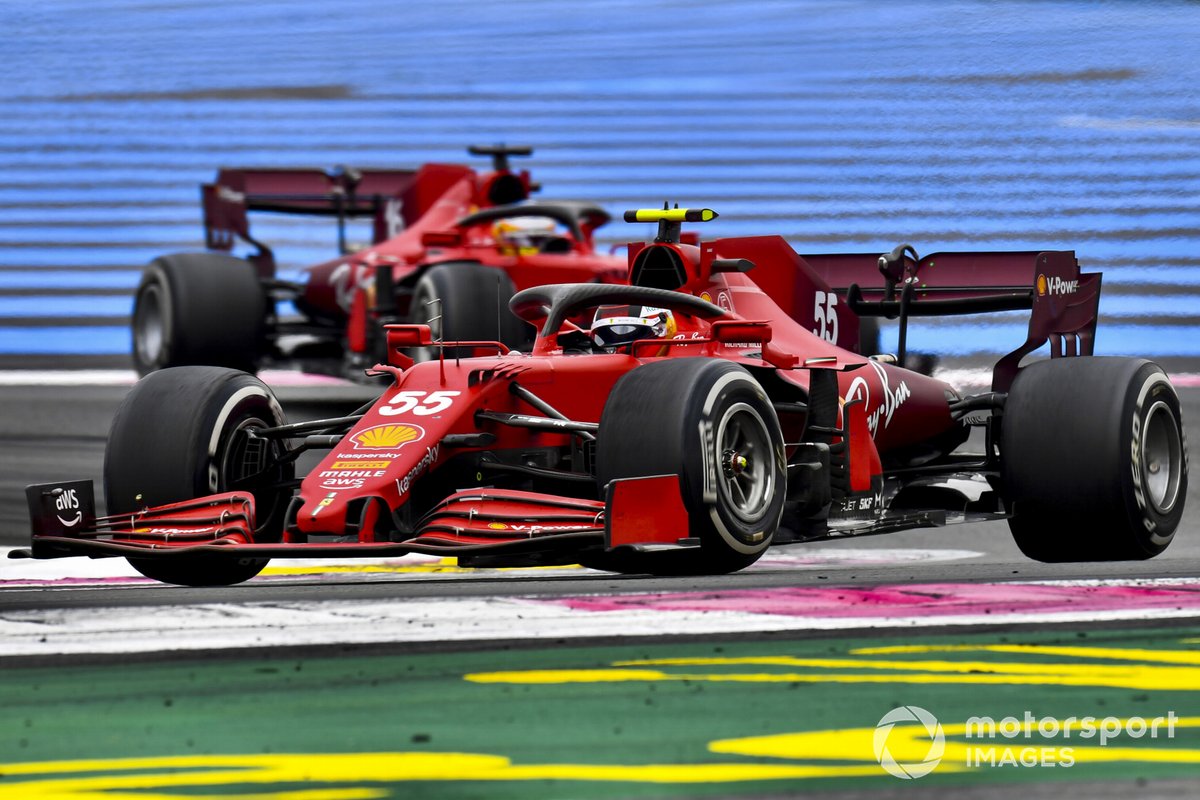
Carlos Sainz Jr., Ferrari SF21, Charles Leclerc, Ferrari SF21
Photo by: Jerry Andre / Motorsport Images
French GP lessons
One of the toughest times for Ferrari was after the French Grand Prix when Carlos Sainz and Leclerc went out of the points after a terrible afternoon with tire problems.
The afternoon had revealed an inherent weakness in Ferrari’s front tire management and prompted an in-depth investigation in Maranello to try to get this under control.
The response was quick, however, and the effort to understand the issues was well worth it as the team has not had such a bad afternoon since then.
Binotto talks about the team’s discovery and explains how deep the analysis went.
“We tried to approach the exercise in Maranello in such a way that we conceptually have a problem with our car that causes this type of tire wear,” says Binotto.
“If we not only look at France, but also at all the races shortly before France, on average we were the ones who somehow put the most strain on the front compared to the entire starting grid. So was that due to a car concept, or was it more of a car setup, or was it due to tire management and driving style?
“Back then we tried to shift the parameters of the vehicle concept, such as suspension geometry, weight distribution or whatever you have.
“We have done various simulations, off-track simulations and driver simulators, trying to map the impact of car design on tire wear, and we are able to somehow try to reduce the tire wear we had in France by shifting the Concepts for car design to be recreated from tires.
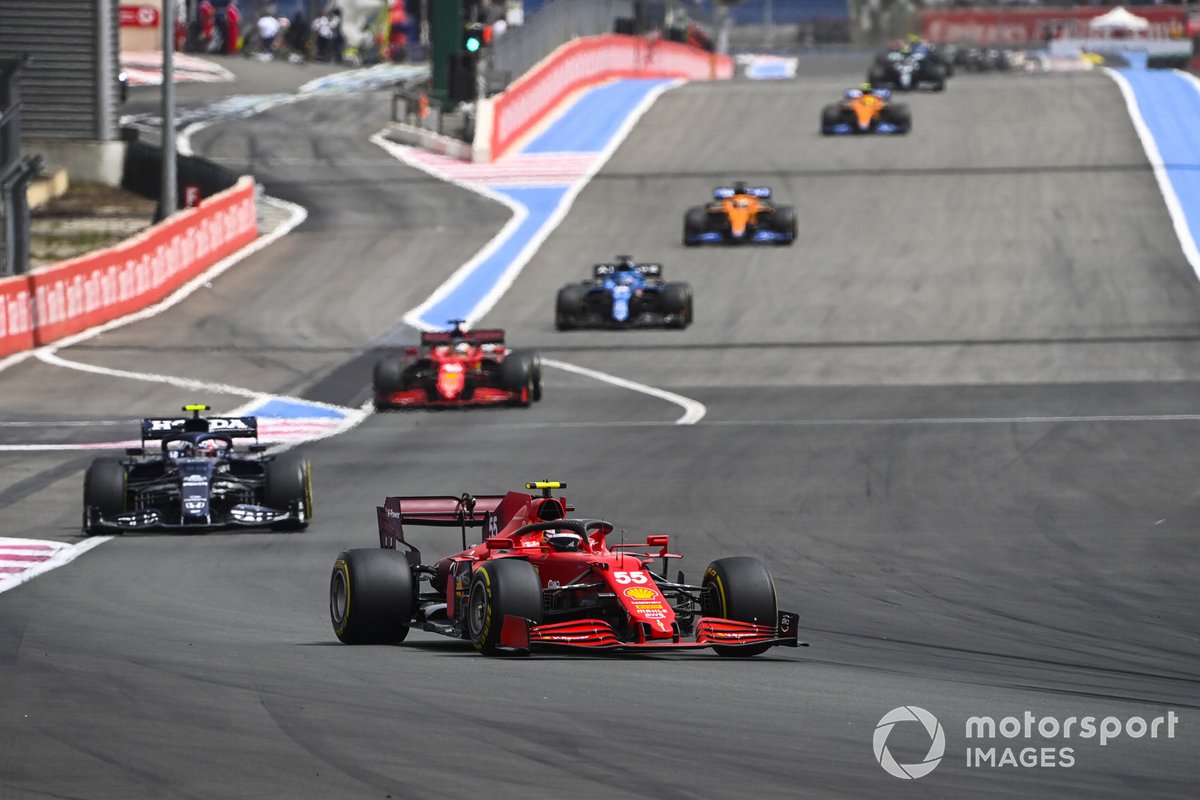
Carlos Sainz Jr., Ferrari SF21, Pierre Gasly, AlphaTauri AT02 and Charles Leclerc, Ferrari SF21
Photo by: Mark Sutton / Motorsport Images
“Then we worked on the setup. So you have a car what it is in terms of setup in terms of design etc, but you can also move what you can: toe, camber, stiffness, weight distribution, weight balance, aerobalance to see if you try anyways can reproduce the situation in terms of tire wear.
“And we tried to model the tires in the sense of a simulation in order to achieve a better overall correlation.”
The bottom line from all of this research came down to the general idea that the way Ferrari set up the SF21 to protest the rear tires caused quite a bit of understeer.
“If you wear it, it’s because you’re sliding. It’s that simple, ”says Binotto. “And when you’re sliding, the reasons for sliding can be a simple setup.
“So you can protect the rear of the car when braking to have good rear stability, but then it means understeer at medium / high speed or low speed, and it was certainly a combination of all of that.
“But wherever we moved in the following races, we tried to have a better balance between oversteer and understeer. We tried to slip less at the front and to manage the tires in that regard.
“I think all the steps we have taken in this direction have proven right and right to deal with tire wear.
“In fact, in Austria, but definitely in Great Britain and also the situation in Hungary, we have shown that we have been able to achieve an improvement in terms of front tire warfare in the last few races, and it doesn’t seem to be as critical as in France.”
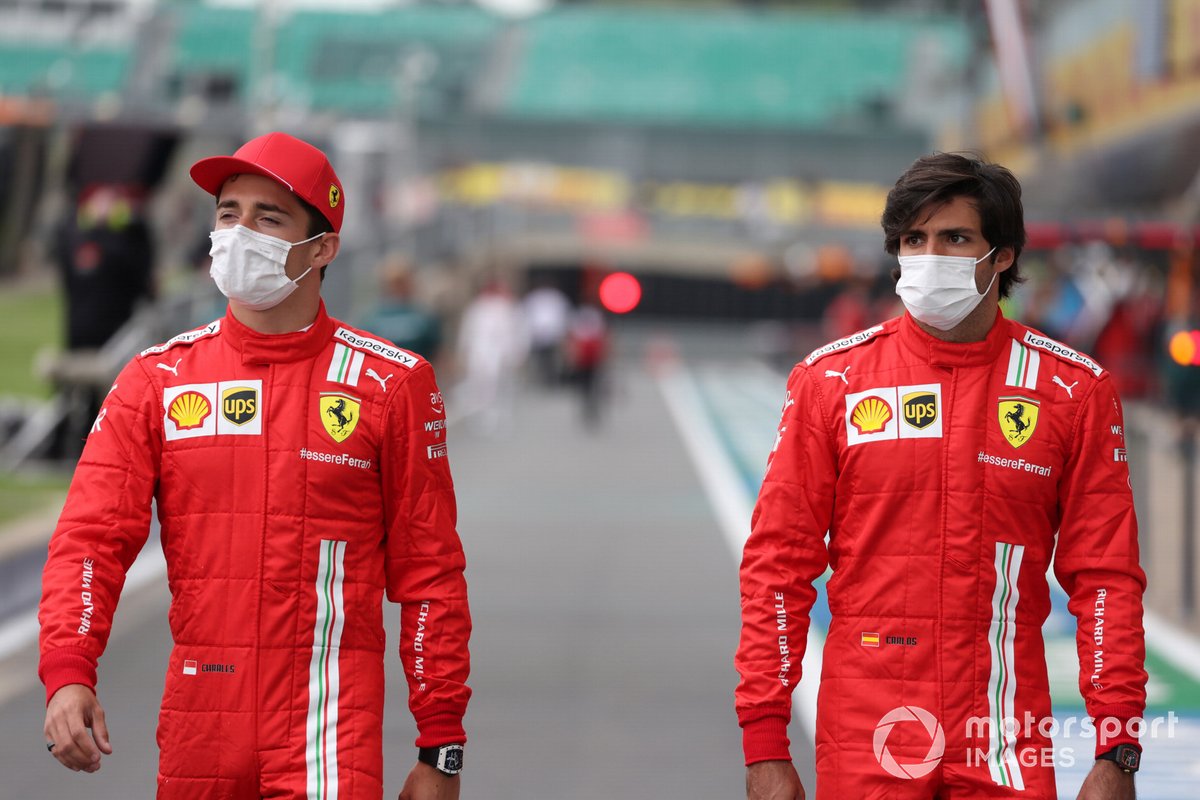
Charles Leclerc, Ferrari and Carlos Sainz Jr., Ferrari
Photo by: Motorsport Images
Best driver line-up
If there’s one area where Ferrari is pretty happy with where things pile up, it’s the driver front.
After signing Sainz to replace Sebastian Vettel as a team-mate from Leclerc, Binotto recently raised some eyebrows when he said he believed his line-up was the best in Formula 1.
“That is my personal assessment,” he explains. “They’re both very young, which is great because we’re trying to build solid foundations for the future, but they’re kind of experienced.
“I think Charles is doing very well. He’s still making progress, he has great potential, and I think he hasn’t done his best yet.
“Carlos has integrated very well into the team. And I think I really have to say in terms of the integration of the drivers, both in terms of the mood, as well as the circuit and the engineers back to Maranello, that it works very well.
“It shows this great potential, a potential that I’m pretty sure there is still a lot to come.
Also read:
“As for the championship, I think they have almost the same points – 83 and 80. And I think I’ve always said that to win the Constructors’ title you need both drivers to perform well. I think that’s what we’re showing.
“We have two solid drivers, two solid racing drivers. And I’m pretty sure that both of them, if they have the right car, can do very well. “
And it’s the numbers behind Ferrari’s 2021 advances that make Binotto confident that Sainz and Leclerc won’t have to wait too long to get the “right” car.
The post The numbers that will be the real judge of Ferrari’s F1 advancement in 2021 first appeared on monter-une-startup.Did you miss our previous article...
https://formulaone.news/ferrari/call-me-louis-serena-williams-amp-lewis-hamilton-banter-about-his-appearance-at-paris-fashion-week




